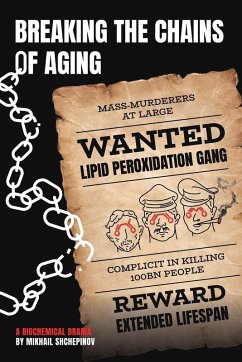Oxygen fuels our bodies with life-giving energy - but at a hidden cost: over time, it also slowly degrades the very systems it powers. Breathing oxygen generates a energy by burning our food but at the same time oxygen relentlessly wears out all parts of our biochemical machinery. Breaking the chains of aging explains how the most pernicious type of biological oxidative damage is lipid peroxidation (LPO), as it is the only example of the non-enzymatic chain reaction. The exponential nature of LPO, which once ignited generates multiple damage, makes antioxidants inefficient. The body does not invest enough into cleanup processes, so the waste products of LPO accumulate with time, accelerating the aging process. Lipid peroxidation affects multiple organs and cellular structures - including the brain, eyes, skin, and mitochondria - as well as key biological processes like sleep regulation, pain perception, inflammation, and aging. Drawing on 3 decades of experience in academia and commerce Mikhail Shchepinov provides an overview of the underlying biochemical processes, and describes a novel approach to mitigating the LPO-inflicted damage. Breaking the chains of aging will be of interest to all those with an interest in the process of aging.
Bitte wählen Sie Ihr Anliegen aus.
Rechnungen
Retourenschein anfordern
Bestellstatus
Storno

